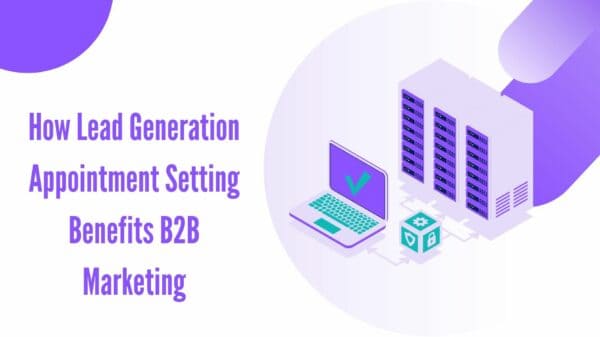While some people believe that the more leads you get, the more guaranteed the results will be, there is another chain that prioritizes the management of the leads that are already in the database.
One of them (or both) is the fight of every good marketer I know.
Generally, this divergence of opinions happens between the sales team and the marketing team, especially when it comes to B2B companies.
- The hurdle found by marketing is the sheer volume of unqualified leads.
- The KPI that demonstrates this is the conversion rate from Lead to Sale.
- Already the sales team will claim that the amount of leads is not enough.
- To try to answer this question, let’s first define what a lead is.
Understand in Practice What is a Lead
First, here is the English definition of Lead Generation on Wikipedia.
(in Portuguese the guys wrote “generation of lides”, I will disregard)
We call leads the business opportunities that a particular company has.
In English this word is more linked to a “clue” of a person interested in buying a particular product or service.
That is, when a person accesses the company (whether through the site or any other form of contact) and shows interest in their products or services filling out a form, it becomes a lead.
So when we talk about generating leads we are talking about attracting potential customers to a company.
A Such of Leads Nutrition, Understand This!
To attract these leads, you have to offer what they are looking for – and here we are not always talking about the final sale.
Some leads will already provide your contacts to your business to close deals, but most of them will not even find you need your product.
But that does not mean they are not potential customers.
That means the path to conversion will be a little longer and you’ll need to target those leads through content that engages your interest.
Let’s take an example:
There is a market called Pay-TV, right?
Everyone knows very well what this service is; the war in this market is only for price.
There are all the players you already know: NET, Vivo, Sky, etc …
When a person accesses the website of these companies, either she wants her first TV package in life, or she wants to lower the cost of the current TV plan.
This is a very hot Lead, because people already know the category;
When someone fills out a form of these, the likelihood of that person closing the purchase with one of these companies is huge!
Now let’s go to another type of lead …
Imagine that you need to set an alarm in your home.
You do not really know how the service works, start searching on Google and …
Suddenly you will find some company websites specific to your city.
Then you fill out a form on the website of these companies and they start calling you.
Make a visit in person at your house …
While they do not arrive, you have seen a video of their product, read an article or another on their blog, received an email with very good information about the product / service of that company.
This effort you just read here is called lead nutrition.
The company nourishes its head with opinions favorable to its purchase decision.
From your first contact with the company (when you were cold) to the last (when you were hot), a certain amount of time has passed that varies from market to market.
So there’s the dilemma: generating new leads or trying to convince the leads of your funnel to buy from you?
There is no right or wrong, but I believe more in generating new leads (as long as you can nurture the old ones and leave them in the hands of another trading team, for example).
It is a fact that a lot of leads obtained maximizes the likelihood of conversions and, therefore, one must not neglect this stage, known as attraction.
On the other hand, it is a great waste to give up part of this volume of leads solely by not understanding what your pains are …
If the ad is relevant to this person, you’ll spark their interest.
If you continue the relationship with articles, videos, phone calls, you can awaken the desire to purchase your products.
And then, my friend, “stick to the machine!”
The action is conversion (sale)!
You need to work for this person to understand that there is a REAL problem to be solved by your company.
And that only your company can solve.
Do you understand what I’m talking about?
Let’s practice with a real example.
One of my clients is Travangelo Cheapest Flight in the United Kingdom
Imagine that there we have a super competitive market in sunglasses.
Many multi-brand stores and many strong brands.
Entering this market is not easy.
However, when we bring a customer to our funnel (which is a client’s conversion zone), we need to show who exactly this new brand of sunglasses is.
In this way, we begin to break the ice between an unknown person and an unknown brand (for them in the US) until we reach the purchase (take!).
And how do we break the ice?
With presentation of the brand, with specific articles, with discount coupons, etc …
This should be standard for all types of business.
But apparently only companies with strategic marketers can implement.
But of course, it’s up to each company to assess how this process – called “lead management” – must be run by your business.
Lead Management: Worth It?
The goal of lead management is to detect at what stage each potential customer is …
This allows you to provide content and information appropriate to each phase, and to be guided to the next stage of the sales funnel.
Taking into consideration that in certain niches, especially in B2B, the act of buying is not impulsive, it does not make sense to waste a lead that arrives “raw”.
It is the marketing team’s role to lap these leads while they make the natural journey of the buying journey, which consists of the following flugrama:
Know the product / service → identify the need → seek a solution → check the possibilities available → make the purchase.
We can conclude that lead generation is a step in the lead management process …
It also includes collecting intelligence, punctuation and nutrition implementation of these leads, generation of sales opportunities, and, finally, the measurement of this entire strategy.
4 Steps to Smart Lead Management
The good news is that there are already marketing automation tools specializing in lead management , such as the IBM Marketing Cloud .
With it you can align marketing and sales strategies, breaking the old stalemate between them and helping them achieve their common goal: to reduce the cost of acquiring customers.
Here are some tasks IBM Marketing Cloud can do for your business:
Lead Nutrition: The drag-and-drop campaign editor is a great ally to put drop-to-go campaigns into practice and monitor workflows via email, direct mail, mobile contact, and telesales. The tool also enables you to automate conversations and react to customer behaviors in real time.
Lead Score: With the tool, it’s simple to track the engagement of your leads and see what stage of the buying journey you’re in. Use this data to provide the right content for each contact.
Landing Pages and Forms: With the drag-and-drop form editor you can create custom pages and forms to capture the data you need to know. Use smart forms to develop customer profiles by compiling your preferences.
CRM Integration: IBM Marketing Cloud can be automatically synchronized with your CRM system. In this way, CRM users can track what the actions and interests of the leads are.
Conclusion on Lead Generation
Anyway, my dear reader …
Lead generation and lead management are entirely complementary and nowadays you need to stay well connected in this.
Because if you build your machine correctly, half of your problems will be solved. Hence you may be more concerned with lead generation than with managing them.
—
Author of this content is a great blogger Yousuf A. Raza who loves guest blogging and content marketing. Currently, He is working as a digital marketing expert at Dream World Travel Agency UK, Ltd. You can catch him at Facebook and Twitter to learn more about him.
I am a digital marketing expert @ travangelo.

2 Comments
Leave a Reply
Cancel reply
Leave a Reply
This site uses Akismet to reduce spam. Learn how your comment data is processed.























































































































































































Adrian Crisostomo
May 10, 2018 at 6:29 am
Its great that you have inputs one tips for lead management because I think good lead management is about having a good system in place. That is why businesses should make use of business management systems and create a process for employees. Of course, lead management is as important as managing the customers you already have. If one outweighs the other, customer service will have a huge problem on complains.
Freddi Zaba
April 8, 2019 at 12:06 pm
Thanks, Yousuf for sharing the article. Lead management is the backbone of successful effective deals tasks. Lead management is an important strategy for helping businesses to follow and upgrade the whole deals process. I am truly hoping that these tips will work for me and really appreciate your suggestions.